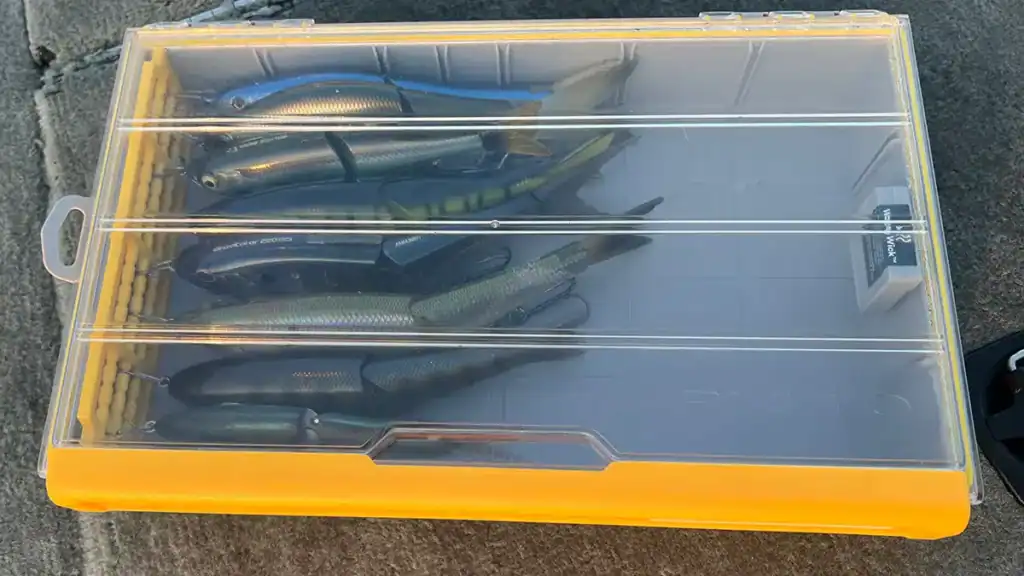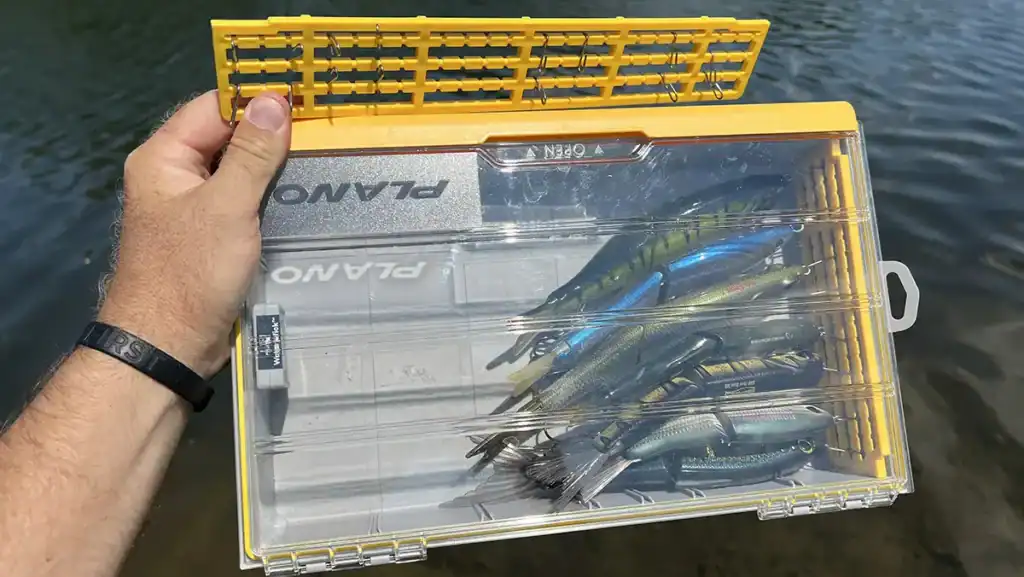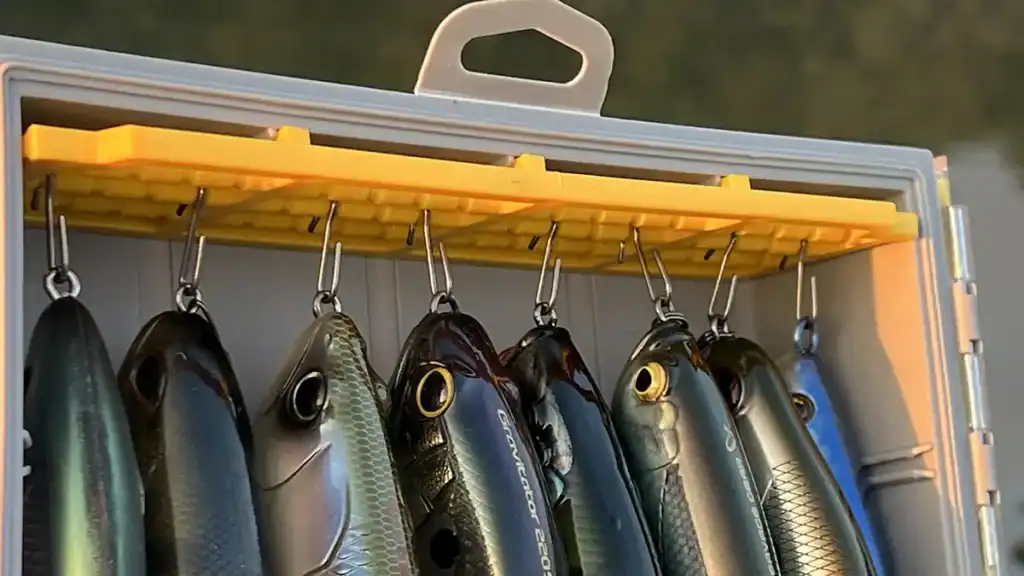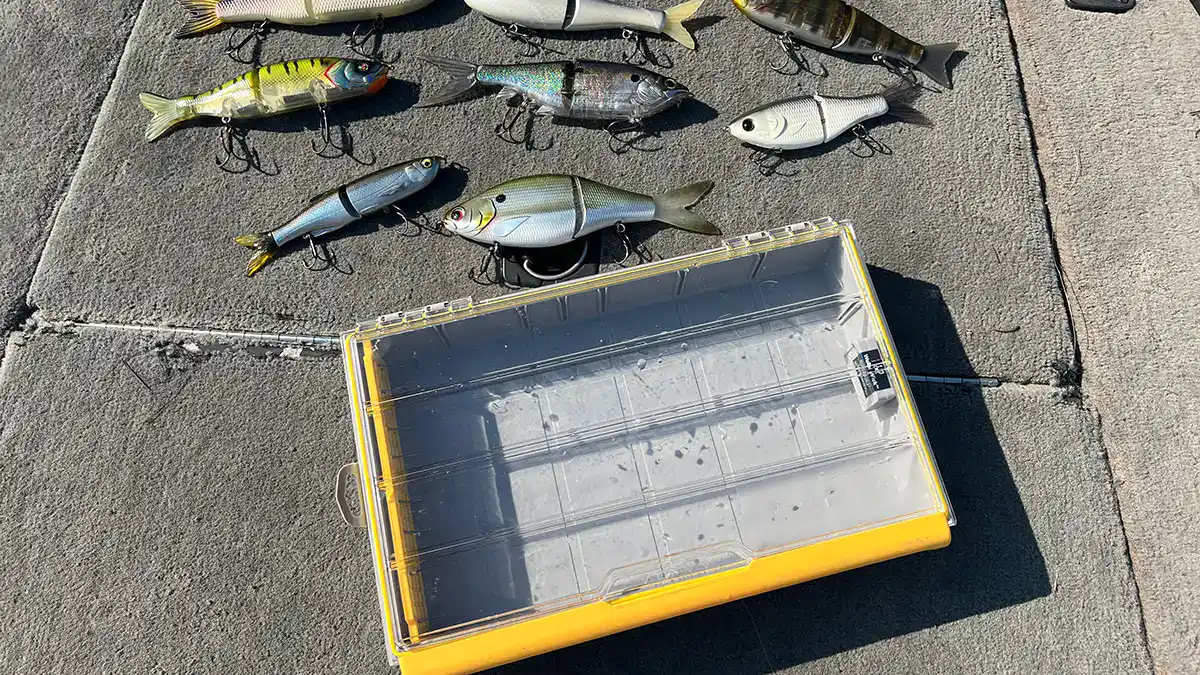Storing big swimbaits is one of the most troublesome tasks for any OCD angler. I’ve tested several different methods for storing these baits, even writing a full story on the subject last year, and there are some great options in that piece if you want to check them out. But since then, I’ve been introduced to the Plano EDGE 3700 Swimbait Box, and I’ve found it to be a solid option as well, for certain scenarios. Here’s more on this box and my thoughts on it.
Through the Wringer

You can configure the box one of two ways, we’ll get more into that in a moment. The way I chose to set it up allowed me to store 8 glidebaits between 6- and 9-inches long. The box could hold baits closer to a foot long as well.
While testing this box, I was simultaneously testing a half dozen or so different glidebaits. So, it was nice to have one box that could contain the majority of those baits, keep them safe and dry, and on the ready whenever I needed them.
There was one challenge to using the box the way I had it configured; I needed to keep the box standing on its end, as opposed to laying on its side or back the way I naturally store most tackle boxes. The reason being, if the box wasn’t standing straight up, there was a good chance the dangling tails would bend or get crimped. Keeping the box upright, however, ensures that the tails stay perfect.
Have it Your Way

Again, I configured my box to where it could hold fewer, but longer baits. However, if you have a bunch of swimbaits under 7 inches long, you can turn the box sideways and store far more baits — up to 24, according to Plano.
The baits hang from rails inside the box on hooks. These hooks can be removed and reattached wherever you like, allowing you to configure the box to where the baits are all in one line, or to where they are staggered so that you can fit more in without the baits piling up on each other. The hooks are a little hard to get on and off, but that ensures they won’t accidentally bounce off at the same time.
Other Features

This box has the one-hand latch that the other EDGE boxes have, which is easier to open than boxes that have multiple latches scattered throughout. There’s also a waterproof seal, which works in tandem with the latch to keep water out. If any trace of water does get trapped inside the box, Plano has added a Water Wick divider for increased protection, as well Rustrictor technology to further protect against rust and corrosion.
You’ll still want to wait until your baits are dry to put them up, but this extensive effort on Plano’s part is the most impressive I’ve seen when it comes to ensuring these more expensive baits avoid damage. In addition to all the protective features, there’s also the EZ label system that you see on other EDGE boxes.
Final Thoughts

The only challenge I ran into with this one was trying to remember to keep it standing on its end. Again, if you configure it to hold shorter baits around 6 inches long, this won’t be a problem at all, as the box will store like normal. I did notice, too, if you put too many baits in the box, they can rub against one another. So, just remember not to pack them in there too tightly.
The Plano EDGE 3700 Swimbait Box is a durable, well-designed product that solves a problem. At $59.99, it’s an investment, but considering it could keep a few hundred dollars worth of swimbaits and glidebaits in tip-top condition, it’s worth considering if you’re a big bait fan.


